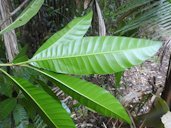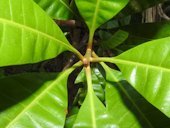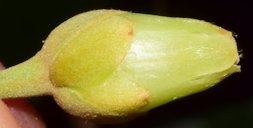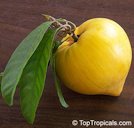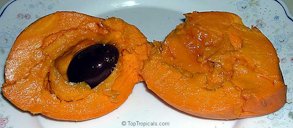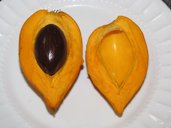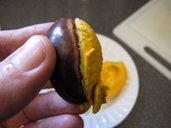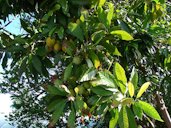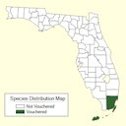| Canistel - Pouteria campechiana | |||||||||||||||||||||||||||||||||
|---|---|---|---|---|---|---|---|---|---|---|---|---|---|---|---|---|---|---|---|---|---|---|---|---|---|---|---|---|---|---|---|---|---|
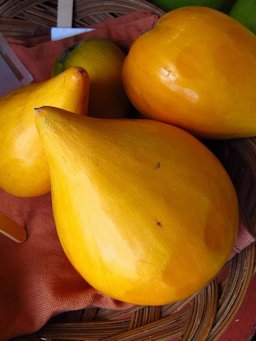 Fig. 1  Pouteria campechiana (eggfruit, canistel), Hoolawa Farms Haiku, Maui, Hawai'i 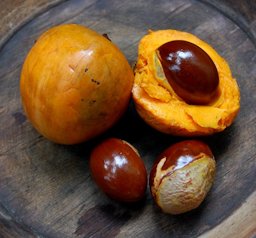 Fig. 2  P. campechiana fruits and seeds from Ragunan Zoo, Jakarta 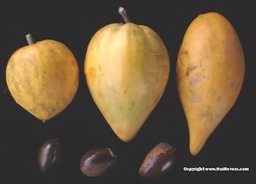 Fig. 3  Three different varieties 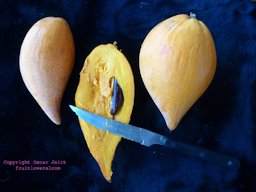 Fig. 4  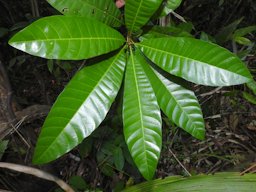 Fig. 5  Canistel P. campechiana, Tapir Mountain, Cayo, Belize 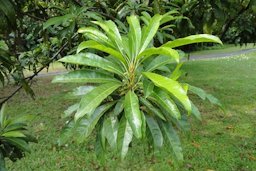 Fig. 6  Leaves are whorled at the ends of branches 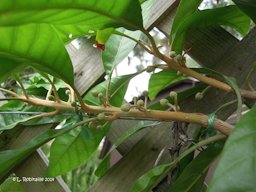 Fig. 10  Fig. 11  P. campechiana 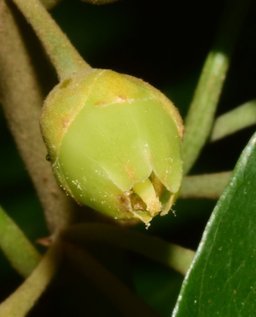 Fig. 12  Canistel Pouteria campechiana, La Huerta, Jal., Mexico 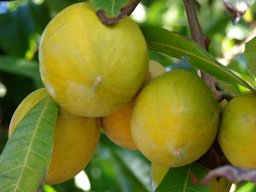
Fig. 16  P. campechiana fruit, Hoolawa Farms Haiku, Maui, Hawai'i 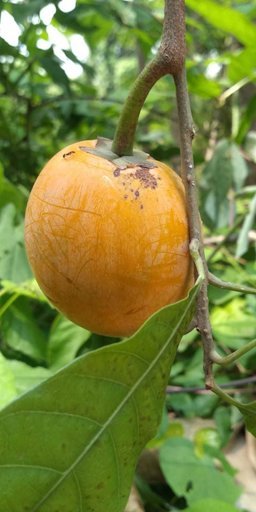 Fig. 17  Canistel Pouteria campechiana, La Huerta, Jal., México 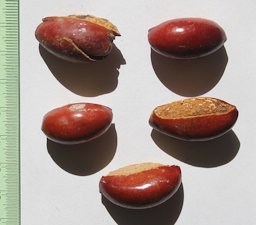 Fig. 27  P. campechiana seeds 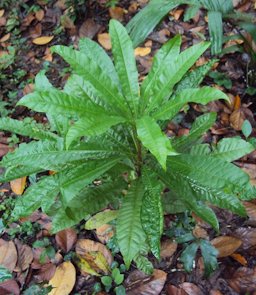 Fig. 28  P. campechiana seedling 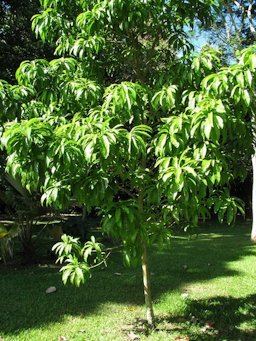 Fig. 29  P. campechiana habit, Kahanu Gardens NTBG Kaeleku Hana, Maui, Hawai'i 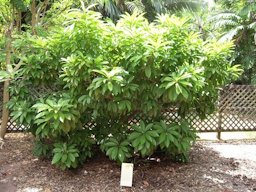 Fig. 30  Canistel tree habit at Fairchild Tropical Botanic Garden 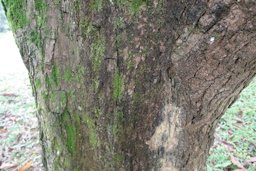 Fig. 31 Trunk 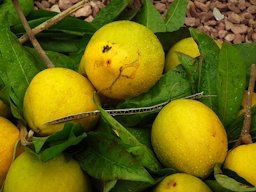 Fig. 32  Egg fruit from Lalbagh flower show, Bangalore, India 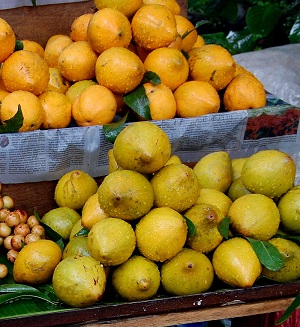 Fig. 33  P. campechiana fruits, sold at Ragunan Zoo, Jakarta |
Scientific
name Pouteria campechiana, Baehni Common names Cuba, Hawaii, Jamaica, Puerto Rico, Bahamas, Florida: egg-fruit, canistel, ti-es, yellow sapote; Costa Rica: canistel, siguapa, zapotillo; Colombia: costiczapotl, custiczapotl fruta de huevo, zapote amarillo; French: jaune d'oeuf; Guatemala: cakixo, canizte, kanis, kaniste, hantzé, kantez, limoncillo, mamee ciruela, zapotillo de montana; Puerto Rico, Venezuela: huevo vegetal; Bahamas: mammee sapota, eggfruit, ti-es; Belize: mamey cerera, mamey cerilla, mamee ciruela, kanizte; caca de niño, cozticzapotl, cucumu, mamey de Campechi, mamey de Cartagena, huicumo, huicon, kan 'iste', kanixte, kanizte, palo huicon, zapote amarillo, zapote de niño, zapote borracho (drunken sapote, perhaps because the fallen fruits ferment on the ground); Mexico: zapote mante, zubul; El Salvador: guaicume, guicume, zapotillo, zapotillo amarillo; Nicaragua: zapote amarillo; Philippines: boracho, canistel, toesa 6 Synonyms Lucuma campechiana Kunth; L. nervosa A. DC.; L. salicifolia Kunth; L. rivicoa var. angustifolia Miq.; L. salicifolia Kunth; Richardella nervosa (A. DC.) Pierre; R. salicifolia (Kunth) Pierren 3 Relatives Abiu, P. caimito; mamey sapote, P. sapote; lucuma, P. obbovata; green sapote, P. viridis; cinnamon apple, P. hypoglauca; bully tree, P. multiflora; caimitillo, P. speciosa; curiola, P. torta; fruteo, P. pariry; green sapote, P. viridis; macarancluba, P. ramiflora; star apple: Chrysophyllum cainito, sapodilla: Manilkara zapota; nispero montanero, P. macrocarpa 5 Family Sapotaceae (sapodilla family) Origin Southern Mexico, Belize, Guatemala, and El Salvador 1 USDA hardiness zones 10-11 Uses Fruit; landscape specimen Height 20-25 ft (6.1–7.6 m); capable of being a large tree to 50+ ft (15 m) Plant habit Evergreen small tree; open-growing tree; upright Longevity Unknown Trunk/bark/branches Brown, furrowed bark; abundant white, gummy latex; young branches are velvety brown 7 Pruning requirement Prune to contain size for ease of harvest Leaves Whorled at the ends of branches; obovate-elliptic; light to dark green Flowers Small; greenish-white; fragrant; hermaphroditic; solitary or in clusters; flowers on new growth 9,10 Fruit Variable in form and size; peel is thin, waxy, smooth; pulp firm, smooth, creamy, sweet; mealy to smooth in texture Season Dec.-Mar. (some cultivars fruit all year) Light requirement Full sun Soil tolerances Tolerant of most well drained soil types including acid and alkaline soils 1 pH preference 5.5-7.5 Drought tolerance Tolerant of long periods of dry soil conditions Flood tolerance Moderately tolerant Aerosol/Soil salt tolerance Not salt tolerant; will die with salt water inundation or persistent salt spray 8 Cold tolerance Young trees damaged at 29 °F (-1.6 °C); mature trees at 23 °F (-5 °C) 1 Wind tolerance Superior wind resistance Plant spacing 25-30 ft (6.7–7.6 m) 1 Invasive potential * None reported Pest resistance Few problems once they are well-established 9 Known hazard None Reading Material Canistel Growing in the Florida Home Landscape, University of Florida pdf The Maya Fruit: Canistel, Fairchild Tropical Botanic Garden, Virtual Herbarium The Canistel, A Winter Fruit for South Florida, Fairchild Tropical Botanic Garden Canistel, Fruits of Warm Climates Canistel, Archives of the Rare Fruit Council of Australia Origin Southern Mexico, Belize, Guatemala, and El Salvador 1 Description The canistel bears an outstanding fruit, showy, flavorful, nutritious, and useful. Yet the species is rarely seen outside tropical fruit collections. The tree is attractive and requires little maintenance. It comes into production over the winter when few other fruits are available. Admiration for this species grows with familiarity. It deserves wider planting and makes an ideal addition to the home landscape in Florida. 5 Leaves The evergreen leaves are whorled at the ends of branches, obovate-elliptic, 2 to 10 inches (5–25 cm) long, tapering toward both ends. 1
Fig. 7. Canistel P. campechiana, Tapir Mountain, Cayo, Belize Fig. 8. Canistel, Tapir Mountain, Cayo, Belize Fig. 9. Canistel at Fairchild Tropical Botanic Garden Flowers The bisexual flowers are borne in the leaf axils, singly or in clusters. Flowers are cream colored, have 5 sepals and 5 or 6 lobed petals (bell-shaped flowers), 5 stamens, and a single ovary. The flowers are pollinated by insects. 1 In tropical areas flowering may occur over an extended period and some flowering may occur year-round, for example in Cuba (Morton, 1987). In contrast, flowering in subtropical areas tends to be more concentrated, for example in Florida flowering occurs from June to August and fruit are harvested from December to March. Anecdotal evidence suggests canistel is insect pollinated and self-compatible. Time from flowering to harvest is 5–6 months. 6,10
Fig. 13,14, 15. Canistel P. campechiana, La Huerta, Jal., Mexico Fruit (climacteric) Fruit shape ranges from spindle-shaped to round to obovate (Fig. 3); commonly with a pointed apex. Fruit range in size from 3 to 5 inches (8-13 cm) long and 2 to 3 inches (5-8 cm) in diameter. The peel is thin, waxy, smooth, green when immature and bright yellow to bright orange when ripe. The pulp is relatively firm, smooth, creamy, sweet, and also bright yellow to orange when ripe; the pulp of incompletely ripe fruit is dry and mealy. The pulp of ripe fruit may be dry to moist and mealy to smooth in texture. The fruit have 1 to 5 glossy brown seeds. 1
Fig. 23. Fruit in half from Pali o Waipio at Hawea Pl Olinda, Maui, Hawai'i Fig. 24. Seed pulp stuck on half at Pali o Waipio Huelo, Maui, Hawai'i Fig. 25. Fruit and leaves at Pali o Waipio Huelo, Maui, Hawai'i Fig. 26. Fruit and leaves at Maui, Hoolawa Farms Haiku, Hawai'i Varieties Page Canistel Cultivars in South Florida, Proc. Fla. State Hort. Soc. pdf Harvesting The fruits are yellow to orange when they are mature and it is the time to be picked. As they soften, the skin texture changes from glossy to dull. The fruit can be stored at room temperature for 3 to 10 days for ripening. 2 The mature but still firm fruits should be clipped, leaving a small piece of stem attached, to avoid tearing the skin. When left to ripen on the tree, the fruits split at the stem end and fall. 7 Pollination Canistel flowers are pollinated by insects. 1 Propagation Look for grafted trees, not seedlings. Seedling trees will grow well, but they will take many years to fruit and will be of unknown and most likely inferior quality. Grafted trees can be purchased from local tropical fruit nurseries and specialty sales throughout South Florida. 2 The Inverted Root Graft: Applications for the Home Garden in Florida, Fairchild Tropical Botanic Garden pdf Planting Young nursery trees should be planted and left to grow during their first season so that they establish quickly. 1 Pruning To maintain optimum fruit production and limit tree height, trees should be selectively pruned annually. To begin, the tree should be pruned at about 10–12 ft (3.1–3.7 m) in height by removing the primary (central) leader and secondary leaders and any vigorous upright limbs during the spring. Subsequently, the tree may be shaped by selectively pruning to form a cone-shaped canopy. Follow-up pruning should be done during late summer to remove any new, vigorous growth. The goal is to maintain fruit production in the lower tree canopy, improve light penetration into the canopy, and limit tree size. 1 Canistel Cultural Calendar Irrigation Once canistel trees are 4 or more years old irrigation will be beneficial to plant growth and crop yields during prolonged dry periods. The specific water requirements for mature trees have not been determined. However, as with other tree crops, the period from bloom and through fruit development is important and drought stress should be avoided at this time with periodic watering. 1 Pests Few pests and diseases attack the canistel. In Florida only scale insects and the fungi, Acrotelium lucumae (rust); Colletotrichum gloeosporioides (fruit spot) have been recorded for this species. The tree is nearly always vigorous and healthy. 1 Diseases Several diseases attack canistel leaves, including scab and leaf-spot (Elsinoe lepagei), leaf-spot (Phyllosticta sp.), black leaf-spot (Phyllachora sp.), leaf necrosis (Gloeosporium sp.). Fruit may be attacked by anthracnose (Colletotrichum gloeosporioides) and rust (Acrotelium lucumae), and roots may be attacked by Pythium sp. 1 Food Uses Canistel may be eaten fresh, although it is more commonly used to make milkshakes, custards, or ice cream. Canistel is high in potassium and vitamins. 1 The ripe fruit or the pulp can be preserved and stored by freezing it for up to 6 months. Neither heating nor freezing will darken the bright yellow of the flesh and its texture makes it perfect for pies, milkshakes puddings and bread. 8 Fruit pulp may also be consumed as a vegetable with salt, pepper and lemon juice or mayonnaise and as a component of baked goods. The pulp may also be dried and used as a food additive. 10 Canistel Recipes, Fairchild Tropical Botanic Garden Virtual Herbarium Database Medicinal Properties ** A decoction of the astringent bark is taken as a febrifuge in Mexico and applied on skin eruptions in Cuba. A preparation of the seeds has been employed as a remedy for ulcers. 6 Other Uses Latex extracted from the tree in Central America has been used to adulterate chicle. The timber is fine-grained, compact, strong, moderately to very heavy and hard, and valued especially for planks and rafters in construction. The heartwood is grayish-brown to reddish-brown and blends into the sapwood which is somewhat lighter in color. The darker the color, the more resistant to decay. 6 General It's binomial name is derived from the Mexican town of Campeche, where it is native. 4 In Florida, it survives winter cold as far north as Palm Beach and Punta Gorda and in protected areas of St. Petersburg. It has never reached fruiting age in California. 7 Other Edibles in the Sapotaceae Family Abiu, Pouteria caimito Caimito, Chrysophyllum cainito Green Sapote, P. veridis Mamey Sapote, P. sapota Miracle Fruit, Synsepalum dulcificum Sapotilla, Manilkara zapota
Further Reading Pouteria campechiana, World Agroforestree Database The Canistel, Archives of the Rare Fruit Council of Australia Canistel (Pouteria campechiana), Fairchild Tropical Botanic Garden The Canistel, Manual Of Tropical And Subtropical Fruits List of Growers and Vendors |
||||||||||||||||||||||||||||||||
| Bibliography 1 Crane, Johathan H., and Carlos F. Balerdi. "Canistel Growing in the Florida Home Landscape." Horticultural Sciences Dept., UF/IFAS Extension, HS1049, Original pub. Nov. 2005, Revised Oct. 2006, and Nov. 2016, Reviewed Dec. 2019, AskIFAS, edis.ifas.ufl.edu/hs299. Accessed 4 Apr. 2017, 2 July 2020. 2 Ledesma, Noris. "Canistel, (Pouteria campechiana)." Fairchild Tropical Botanic Garden, 20 Apr. 2012, fairchildgarden.org. Accessed 24 Dec. 2014. 3 "Pouteria campechiana synonyms." USDA, Agricultural Research Service, U.S. National Plant Germplasm System, GRIN-Global, ars-grin.gov. Accessed 4 Apr. 2017. 4 "Pouteria campechiana." Wikipedia, wikipedia.org. Accessed 4 Apr. 2017. 5 Boning, Charles R. Florida's Best Fruiting Plants- Native and Exotic Trees, Shrubs, and Vines. Sarasota, Pineapple Press, 2006. 6 Fruits of Warm Climates. Julia F. Morton, Miami, 1987. 7 Orwa C., et al. "Pouteria campechiana Baehni." Agroforestree Database: a tree reference and selection guide version 4.0., 2009, worldagroforestry.org. Accessed 5 Apr. 2017. 8 Ledesma, Noris. "The Canistel, A Winter Fruit for South Florida." Fairchild Tropical Botanic Garden, Miami Herald, 20 Apr. 2012, fairchildgarden.org. Accessed 24 Dec. 2014. 9 Joyner, Gene. "Canistel." Archives of the Rare Fruit Council of Australia, Article from RFCI Inc. Newsletter, Jan. 1988, July 1988, rfcarchives.org.au.. Accessed 23 Dec. 2014. 10 The Encyclopedia of Fruit & Nuts. Edited by Jules Janick and Robert E. Paull, Cambridge, CABI, 2008. Photographs Fig. 1 Gray, Nathan. "Eggfruit at the South Kona Fruit Stand in Hōnaunau, Hawai'i (Big Island)." Flickr, 2013, (CC BY-NC-SA 2.0), flickr.com. Accessed 4 Apr. 2017. Fig. 2 Wibowo, Djatmiko. "Pouteria campechiana fruits and seeds from Ragunan Zoo, Jakarta." Wikimedia Commons, 2010, (CC BY-SA 3.0), GFDL, commons.wikimedia.org. Accessed 4 Apr. 2017. Fig. 3,4,6,20 Kwan. "Pouteria campechiana." Plant Observatory, 2010, natureloveyou.sg. Accessed 28 Sept. 2014. Fig. 5,7,8 Belize Karst Habitat Conservation. "Canistel P. campechiana, Tapir Mountain, Cayo, Belize." iNaturalist, Reaearch Grade, 4 May 2023, (CC BY-SA 4.0), www.inaturalist.org/observations/159649199. Accessed 11 Jan. 2024. Fig. 9,10,30 Robitaille, Liette. "Canistel Series." 2014, www.growables.org. Fig. 11,12,13,14,15 Sullender Barry. "Canistel Pouteria campechiana, La Huerta, Jal., Mexico." iNaturalist, Reaearch Grade, 22 Feb. 2018, (CC BY-SA 4.0), www.inaturalist.org/observations/9960174. Accessed 11 Jan. 2024. Fig. 16 Starr, Forest and Kim. "Pouteria campechiana (Eggfruit, canistel) Fruit at Hoolawa Farms Haiku, Maui, Hawai'i." Flickr, 2006, (CC BY 2.0), flickr.com. Accessed 4 Apr. 2017. Fig. 17 tamarindo1. "Canistel Pouteria campechiana, La Huerta, Jal., Mexico." iNaturalist, Reaearch Grade, 29 June 2021, (CC BY-SA 4.0), www.inaturalist.org/observations/85019003. Accessed 11 Jan. 2024. Fig. 18,22 "Pouteria campechiana." Top Tropicals, toptropicals.com. Accessed 28 Sept. 2014. Fig. 19 Issadeen, Hafiz. Lavulu - Egg fruit/Yellow sapote." Flickr, 2010, (CC BY 2.0), flickr.com. Accessed 4 Apr. 2017. Fig. 21 Conrad, Jim. "Fruits of a different shape. Jim Conrad's Naturalist Newsletter." Wikimedia Commons, Public domain, commons.wikimedia.org. Accessed 5 Apr. 2017. Fig. 23 Starr, Forest and Kim. "Pouteria campechiana (Eggfruit, canistel). Fruit in half from Pali o Waipio at Hawea Pl Olinda, Maui, Hawai'i." Starr Environmental, 2013, starrenvironmental.com. Accessed 1 Apr. 2014. Fig. 24 Starr, Forest and Kim. "Pouteria campechiana (Eggfruit, canistel). Seed pulp stuck on half at Pali o Waipio Huelo, Maui, Hawai'i." Flickr, 2013, (CC BY 2.0), flickr.com. Accessed 4 Apr. 2017. Fig. 25 Starr, Forest and Kim. "Pouteria campechiana (Eggfruit, canistel). Fruit and leaves at Pali o Waipio Huelo, Maui, Hawai'i." Flickr, 2013, (CC BY 2.0), flickr.com. Accessed 4 Apr. 2017. Fig. 26 Starr, Forest and Kim. "Pouteria campechiana (Eggfruit, canistel). (fruit and leaves). Maui, Hoolawa Farms Haiku, Hawai'i." Flickr, 2006, (CC BY-SA 3.0), flickr.com. Accessed 4 Apr. 2017. Fig. 27 Omar, hoftun. "Pouteria campechiana seeds." Wikimedia Commons, 14 July 2017, (CC BY-SA 4.0), commons.wikimedia.org/File:Pouteria_campechiana_seeds,_by_Omar_Hoftun.jpg. Accessed 11 Jan. 2024. Fig. 28 Vinayaraj. "Pouteria campechiana. Small plant." Wikimedia Commons, 2012, (CC BY-SA 3.0), commons.wikimedia.org. Accessed 4 Apr. 2017. Fig. 29 Starr, Forest and Kim. "Pouteria campechiana (Eggfruit, canistel) Habit at Kahanu Gardens NTBG Kaeleku Hana, Maui, Hawai'i." Flickr, 2009, (CC BY 2.0), flickr.com. Accessed 4 Apr. 2017. Fig. 31 Rameshng. "Egg Fruit from Lalbagh Flower Show." Wikimedia Commons, 2012, (CC BY-SA 3.0), commons.wikimedia.org. Accessed 26 Dec. 2014. Fig. 32 Djatmiko, Wibowo. "Pouteria campechiana fruits, sold at Ragunan Zoo, Jakarta." Wikimedia Commons, 2010, (CC BY-SA 3.0), GFDL, commons.wikimedia.org. Accessed 4 Apr. 2017. Fig. 33 Wunderlin, R. P., et al. "Species Distribution Map: Pouteria campechiana." Atlas of Florida Vascular Plants, [S. M. Landry and K. N. Campbell (application development), USF Water Institute] Institute for Systematic Botany, University of South Florida, Tampa, florida.plantatlas.usf.edu/Plant.aspx?id=267. Accessed 11 Jan. 2024. - * UF/IFAS Assessment of Non-native Plants in Florida's Natural Areas ** Information provided is not intended to be used as a guide for treatment of medical conditions. Published Mar. 2014 LR. Last update 11 Jan. 2024 LR |
|||||||||||||||||||||||||||||||||
